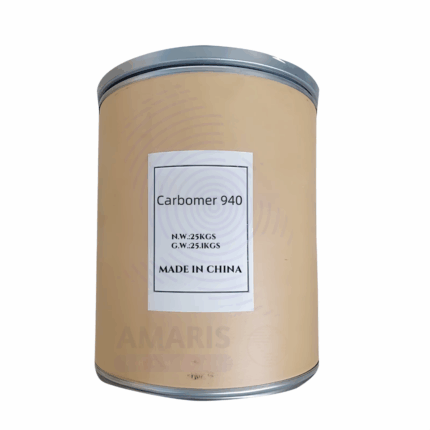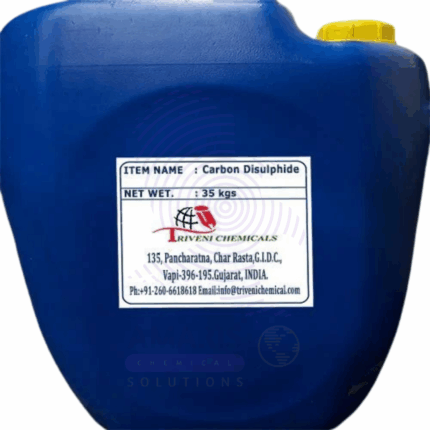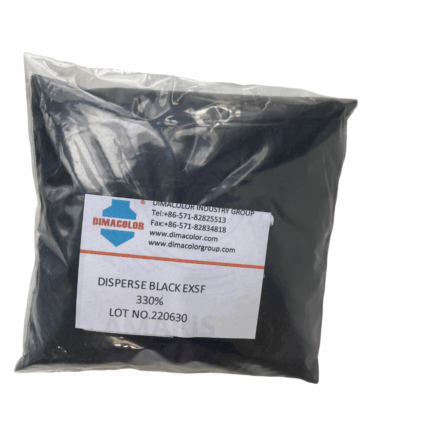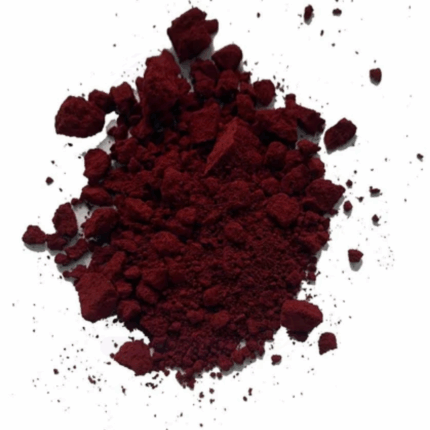Carbon Black
Carbon Black is a fine black powder composed of elemental carbon in the form of near-spherical colloidal particles and coalesced particle aggregates. It is produced through the incomplete combustion or thermal decomposition of hydrocarbons such as oil or natural gas. Depending on the manufacturing process (e.g., furnace black, channel black, thermal black, or acetylene black), it exhibits varying particle sizes, surface areas, and structures. Carbon Black is valued for its pigmenting, reinforcing, conductive, and UV-protective properties. It is widely used in rubber production, plastics, inks, coatings, batteries, and electronics. Its high surface area and fine particle size make it indispensable in applications requiring durability, color depth, or conductivity.
Carbon Black Uses
- Primary Uses
Rubber & Tire Industry
- Used as a reinforcing filler in the manufacture of tires, conveyor belts, hoses, and other rubber products.
- Enhances tensile strength, wear resistance, and abrasion resistance in rubber compounds.
- Commonly found in automotive tires (sidewalls, treads, and inner linings) for UV protection and durability.
Plastics & Polymers
- Acts as a black pigment and UV stabilizer in polyethylene, polypropylene, and PVC applications.
- Provides conductivity or antistatic properties in conductive plastics.
- Used in geomembranes, pipes, containers, and wire insulation for longevity and weather resistance.
Paints, Coatings & Inks
- Serves as a deep black pigment in industrial and automotive coatings.
- Used in inks (printing inks, toner cartridges) for rich black color and coverage.
- Improves scratch resistance and conductivity in specialized coatings.
Electrical & Electronics
- Applied as a conductive agent in batteries (especially lithium-ion and lead-acid batteries).
- Used in conductive composites and EMI shielding applications.
- Functions as a performance enhancer in capacitors, resistors, and semiconductors.
Secondary Uses
Metallurgy
- Used as a reducing agent in metal extraction and smelting processes.
Pigments in Ceramics & Glass
- Acts as a colorant in decorative ceramics, enamels, and black glass.
Photovoltaics
- Investigated in solar cell technologies as a cost-effective light-absorbing material.
Toner & Office Supplies
- Integral in laser printer toner formulations for precise black print quality.
Art Supplies
- Utilized in artists’ charcoal, black pastels, and pigments for rich, deep black tones.
Explosives & Pyrotechnics
- Functions as a fuel in pyrotechnic formulations to enhance burn characteristics
- Basic Identification Attributes
- Chemical Name (IUPAC): Carbon
- Common/Trade Name: Carbon Black
- CAS Number: 1333-86-4
- HS Code: 2803.00.00
- Molecular Formula: C
- Synonyms:
- Furnace black
- Channel black
- Thermal black
- Acetylene black
- Lampblack
- Physical & Chemical Properties
- Physical State: Fine powder
- Color & Odor: Deep black; odorless
- Particle Size (Primary): 10–500 nm (aggregated into larger structures)
- Surface Area (BET): 20–1500 m²/g (depending on grade)
- Density: ~1.8–2.1 g/cm³ (true density)
- Bulk Density: 0.1–0.5 g/cm³ (loose form)
- Solubility:
- Insoluble in water and organic solvents
- Dispersible in some polymer systems
- Conductivity: Varies by type; can be electrically conductive
- pH (aqueous dispersion): ~6–9
- Volatile Content: Typically < 5%
- Stability: Chemically stable under normal conditions
- Safety & Hazard Attributes
- Hazard Class (GHS): Not classified as hazardous in bulk form; dust inhalation may pose health risk
- NFPA Ratings:
- Health: 1
- Flammability: 1
- Reactivity: 0
- Exposure Limits:
- OSHA PEL: 3.5 mg/m³ (TWA)
- ACGIH TLV: 3.0 mg/m³ (inhalable)
- Toxicity:
- Chronic inhalation may lead to lung effects (e.g., inflammation, fibrosis)
- Classified by IARC as Group 2B (possibly carcinogenic to humans via inhalation)
- Reactivity: Stable; fine dust may be combustible in air
- Storage & Handling Attributes
- Storage Conditions: Store in a dry, well-ventilated area away from ignition sources
- Container Type: Fiber drums, polyethylene-lined bags, bulk containers
- Shelf Life: Indefinite under proper storage conditions
- Special Handling: Avoid generation of airborne dust; use appropriate grounding to prevent static discharge
- Regulatory & Compliance Attributes
- FDA Status: Some grades are approved for indirect food contact applications (21 CFR 178.3297)
- REACH Status: Registered under REACH
- IARC Classification: Group 2B (possible human carcinogen via inhalation)
- Transportation: Not classified as hazardous for transport (DOT, IATA, IMDG)
- Waste Disposal: Dispose according to local environmental regulations; non-hazardous solid waste
- Environmental & Health Impact
- Ecotoxicity: Low water solubility limits bioavailability; not highly toxic to aquatic life
- Persistence: Does not degrade; remains in environment
- Bioaccumulation: Not expected to bioaccumulate
- Carcinogenicity/Mutagenicity: IARC 2B (possible carcinogen via inhalation of fine airborne particles)
Biodegradability: Not biodegradable; inert in natural conditions
- Safety Handling Precautions
Personal Protective Equipment (PPE):
- Dust mask or respirator (NIOSH-approved)
- Protective goggles
- Gloves and protective clothing
Handling Measures:
- Minimize dust formation; use local exhaust ventilation
- Ground containers to prevent static electricity
- Do not breathe dust; avoid skin or eye contact
Storage Measures:
- Keep containers tightly closed
- Store in cool, dry place
- Protect from heat, sparks, and open flames
Hygiene Practices:
- Wash thoroughly after handling
- Avoid eating, drinking, or smoking in work area
First Aid Measures
- Inhalation: Move person to fresh air; seek medical attention if respiratory symptoms occur
- Skin Contact: Wash with soap and water; seek medical attention for irritation
- Eye Contact: Rinse immediately with water for 15 minutes; seek medical attention if irritation persists
- Ingestion: Rinse mouth with water; seek medical attention if symptoms develop
Firefighting Measures
- Fire Hazards: Dust may form explosive mixtures with air
- Extinguishing Media: Dry chemical, foam, carbon dioxide (CO₂)
- Special Precautions: Firefighters should wear self-contained breathing apparatus and protective clothing
- Decomposition Products: CO, CO₂, fine soot


 Preservatives(food)
Preservatives(food) Flavor Enhancers
Flavor Enhancers Acidulants
Acidulants Sweeteners
Sweeteners Antioxidants
Antioxidants Colorants(food)
Colorants(food) Nutraceutical Ingredients (food)
Nutraceutical Ingredients (food) Nutrient Supplements
Nutrient Supplements Emulsifiers
Emulsifiers
 Collectors
Collectors Dust Suppressants
Dust Suppressants Explosives and Blasting Agents
Explosives and Blasting Agents Flocculants and Coagulants
Flocculants and Coagulants Frothers
Frothers Leaching Agents
Leaching Agents pH Modifiers
pH Modifiers Precious Metal Extraction Agents
Precious Metal Extraction Agents
 Antioxidants(plastic)
Antioxidants(plastic) Colorants (Pigments, Dyes)
Colorants (Pigments, Dyes) Fillers and Reinforcements
Fillers and Reinforcements Flame Retardants
Flame Retardants Monomers
Monomers Plasticizers
Plasticizers Polymerization Initiators
Polymerization Initiators Stabilizers (UV, Heat)
Stabilizers (UV, Heat)
 Antifoaming Agents
Antifoaming Agents Chelating Agents
Chelating Agents Coagulants and Flocculants
Coagulants and Flocculants Corrosion Inhibitors
Corrosion Inhibitors Disinfectants and Biocides
Disinfectants and Biocides Oxidizing Agents
Oxidizing Agents pH Adjusters
pH Adjusters Scale Inhibitors( water)
Scale Inhibitors( water)
 Antioxidants(cosmetic)
Antioxidants(cosmetic) Emollients
Emollients Fragrances and Essential Oils
Fragrances and Essential Oils Humectants
Humectants Preservatives
Preservatives Surfactants(cosmetic)
Surfactants(cosmetic) Thickeners
Thickeners UV Filters
UV Filters
 Fertilizers
Fertilizers Soil Conditioners
Soil Conditioners Plant Growth Regulators
Plant Growth Regulators Animal Feed Additives
Animal Feed Additives Biostimulants
Biostimulants Pesticides (Herbicides, Insecticides, Fungicides)
Pesticides (Herbicides, Insecticides, Fungicides)
 Active Pharmaceutical Ingredients (APIs)
Active Pharmaceutical Ingredients (APIs) Excipients
Excipients Solvents(pharmaceutical)
Solvents(pharmaceutical) Antibiotics
Antibiotics Antiseptics and Disinfectants
Antiseptics and Disinfectants Vaccine Adjuvants
Vaccine Adjuvants Nutraceutical Ingredients (pharmaceutical)
Nutraceutical Ingredients (pharmaceutical) Analgesics & Antipyretics
Analgesics & Antipyretics
 Analytical Reagents
Analytical Reagents Solvents(lab)
Solvents(lab) Chromatography Chemicals
Chromatography Chemicals Spectroscopy Reagents
Spectroscopy Reagents microbiology-and-cell-culture-reagents
microbiology-and-cell-culture-reagents Molecular Biology Reagents
Molecular Biology Reagents Biochemical Reagents
Biochemical Reagents Inorganic and Organic Standards
Inorganic and Organic Standards Laboratory Safety Chemicals
Laboratory Safety Chemicals Specialty Laboratory Chemicals(Special Laboratory Equipment)
Specialty Laboratory Chemicals(Special Laboratory Equipment)
 Demulsifiers
Demulsifiers Hydraulic Fracturing Fluids
Hydraulic Fracturing Fluids Scale Inhibitors(oil)
Scale Inhibitors(oil) Surfactants(oil)
Surfactants(oil) Drilling Fluids
Drilling Fluids
 Dyes and Pigments
Dyes and Pigments Bleaching Agents
Bleaching Agents Softening Agents
Softening Agents Finishing Agents
Finishing Agents Antistatic Agents
Antistatic Agents
 Admixtures
Admixtures Waterproofing Agents
Waterproofing Agents Sealants and Adhesives
Sealants and Adhesives Curing Compounds
Curing Compounds Concrete Repair Chemicals
Concrete Repair Chemicals Anti-Corrosion Coatings
Anti-Corrosion Coatings
 Surfactants(cleaning)
Surfactants(cleaning) Builders
Builders Enzymes
Enzymes Solvents (Cleaning)
Solvents (Cleaning) Fragrances
Fragrances
 Electronic Chemicals
Electronic Chemicals Catalysts
Catalysts Lubricants
Lubricants Photographic Chemicals
Photographic Chemicals Refrigerants
Refrigerants Automotive chemicals
Automotive chemicals Pyrotechnic Chemicals
Pyrotechnic Chemicals
 Biodegradable Surfactants
Biodegradable Surfactants Bio-based Solvents
Bio-based Solvents Renewable Polymers
Renewable Polymers Carbon Capture Chemicals
Carbon Capture Chemicals Wastewater Treatment Chemicals
Wastewater Treatment Chemicals
 Pigments
Pigments Solvents(paint)
Solvents(paint) Specialty Coatings
Specialty Coatings Binders/Resins
Binders/Resins Additives
Additives Driers
Driers Anti-Corrosion Agents
Anti-Corrosion Agents Functional Coatings
Functional Coatings Application-Specific Coatings
Application-Specific Coatings
 Fresh Herbs
Fresh Herbs Ground Spices
Ground Spices Whole Spices
Whole Spices Spice Blends
Spice Blends Dried Herbs
Dried Herbs
 Leavening Agents
Leavening Agents Dough Conditioners
Dough Conditioners Flour Treatments
Flour Treatments Fat Replacers
Fat Replacers Decoratives
Decoratives Preservatives(baking)
Preservatives(baking)
 Plasticizers & Softeners
Plasticizers & Softeners Reinforcing Agents
Reinforcing Agents Adhesion Promoters
Adhesion Promoters Vulcanizing Agents
Vulcanizing Agents Antidegradants
Antidegradants Blowing Agents
Blowing Agents Fillers & Extenders
Fillers & Extenders Accelerators & Retarders
Accelerators & Retarders
























